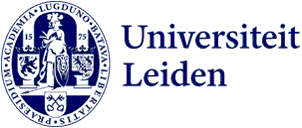
From atoms to the cosmos: ‘Everything in the universe is connected’
Exploring the largest structures in the universe by looking at the tiniest particles? Lydia Stofanova, PhD candidate at Leiden Observatory and SRON Netherlands Institute for Space Research, dives into this intricate connection. In her PhD research, she explored how elements like oxygen influence the large-scale structure of the universe, the cosmic web.
The universe’s largest structures are revealed by the tiniest particles. ‘Everything in the universe is connected,’ Stofanova says. ‘The elements we are made of are the same elements that help us study the largest scales in our Universe.’ That’s the true wonder of the vastness of the universe that we see when we look into the night sky.
Where did the missing material of the universe go?
At the largest scale, the universe is structured like a giant web—a ‘cosmic web’—of filaments filled with gas and dark matter that bind galaxies and galaxy clusters together. This web-like structure was already present in the past, we know through observation. But looking at the local universe, scientists do not observe the same amount of material as they would expect. Where did this matter go?

‘We need to put on a different set of glasses’
Stofanova further explored an existing theory and method to answer this question. ‘With help from simulations, we found that this matter did not get lost, but the gas got heated. Because of this rise in temperature, it has become invisible in one waveband (ultraviolet) and became visible in another (X-ray). We just have to put on a different set of glasses to detect the cosmic web and its filaments!’
It has been around for many decades, but detecting the hot and rarefied gas of the cosmic web is very challenging with nowadays instruments.
This alternative way of observation is called X-ray spectroscopy. Stofanova used this method to study the cosmic web. It has been around for many decades, but detecting the hot and rarefied gas of the cosmic web is very challenging with nowadays instruments. Therefore, scientists like Stofanova need to make more simulations and explore this methodology further in order to prepare us for future missions which promise to detect gas in these filaments. Stofanova: ‘If we want to be able to better understand the evolution of our universe and its largest structures, we first need to detect this hotter gas, observe its properties and behaviour. We might even need to adjust our models to ensure they accurately reflect what we are seeing.’
From micro to macro – studying the largest structures in our universe
The connection between micro and macro is something that connects everything Stofanova studied and learned during her PhD. ‘Throughout my Ph.D., I relied on atomic and plasma physics, which usually apply to tiny scales, like ions and electrons. Frankly, these principles helped me study some of the largest structures in our universe.’
The findings from X-ray spectroscopy don’t just remain theoretical. They provide a data-driven foundation for simulations that model the universe’s evolution. By combining real observations with theoretical models, researchers like Stofanova can simulate how elements like oxygen spread through cosmic structures over time, lending insight into processes that have shaped the universe since its earliest days.

Visiting NASA: a childhood dream coming true
Detecting the cosmic web filaments with X-ray spectroscopy is challenging, Stofanova says, but not impossible. ‘The future space missions are our biggest hope for this detection.’ One of these missions is the Athena Observatory, that will launch in the late 2030s.
Though Stofanova worked solely with simulations, she was able to visit one of the places where theory is put into practice: NASA, where she was invited to present the findings of her thesis. ‘It was fulfilling my childhood dream. It felt like everything had come full circle.’
PhD defense
Lydia Stofanova defended her dissertation titled ‘From Atoms to the Cosmos: Exploring the Cosmic Web Beyond Collisional Ionisation Equilibrium’ on 13 November at the Academy Building in Leiden. Her supervisors were Aurora Simionescu, Jelle Kaastra and Joop Schaye.
